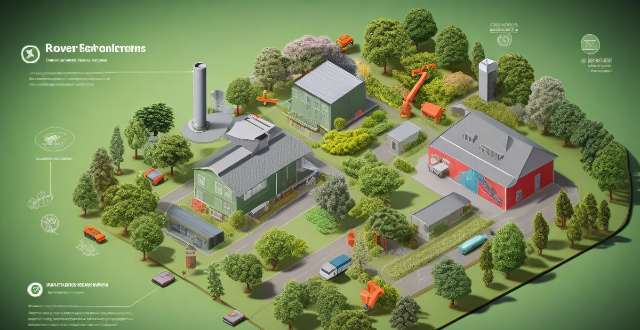Carbon capture technology can help reduce greenhouse gas emissions, improve air quality, encourage economic growth, and enhance ecosystem health. It has the potential to mitigate climate change, meet emission reduction targets, enhance energy security, reduce pollutants, protect human health, create jobs, stimulate innovation, promote clean energy, protect biodiversity, preserve natural resources, and restore degraded landscapes. Investing in carbon capture technology may prove to be crucial for creating a more sustainable future.

Potential Benefits of Carbon Capture Technology for the Environment
Carbon capture technology is a process that captures carbon dioxide (CO2) emissions from power plants, industrial processes, and other sources before they are released into the atmosphere. This technology has the potential to significantly reduce greenhouse gas emissions and mitigate the effects of climate change. In this article, we will discuss the potential benefits of carbon capture technology for the environment.
Reducing Greenhouse Gas Emissions
1. Mitigating Climate Change: Carbon capture technology can help reduce the concentration of CO2 in the atmosphere, which is one of the primary drivers of climate change. By capturing and storing CO2 emissions, we can slow down the rate of global warming and buy time to transition to cleaner energy sources.
2. Meeting Emission Reduction Targets: Many countries have set ambitious targets to reduce their greenhouse gas emissions in order to meet the goals of the Paris Agreement. Carbon capture technology can help these countries achieve their emission reduction targets by providing a means to remove CO2 from the atmosphere.
3. Enhancing Energy Security: Carbon capture technology allows countries to continue using fossil fuels while reducing their environmental impact. This can help ensure energy security by reducing reliance on imported fuels and increasing domestic energy production.
Improving Air Quality
1. Reducing Pollutants: Carbon capture technology not only removes CO2 from flue gases but also other pollutants such as sulfur dioxide (SO2) and nitrogen oxides (NOx). This can lead to improved air quality, particularly in areas with high levels of pollution.
2. Protecting Human Health: Poor air quality has been linked to a range of health problems, including respiratory diseases, heart disease, and stroke. By improving air quality through carbon capture technology, we can protect human health and reduce healthcare costs associated with pollution-related illnesses.
Encouraging Economic Growth
1. Creating Jobs: The development and implementation of carbon capture technology will require significant investment in research, development, and infrastructure. This investment can create jobs in a variety of sectors, including engineering, construction, and operations.
2. Stimulating Innovation: Carbon capture technology presents an opportunity for innovation in both the private and public sectors. As companies invest in research and development, new technologies and processes may emerge that can further reduce greenhouse gas emissions and drive economic growth.
3. Promoting Clean Energy: Carbon capture technology can be used in conjunction with renewable energy sources, such as wind and solar power, to create a more sustainable energy system. This can help promote the growth of clean energy industries and create new opportunities for economic development.
Enhancing Ecosystem Health
1. Protecting Biodiversity: Climate change has already had significant impacts on ecosystems around the world, leading to habitat loss, species extinction, and disruptions in food chains. By reducing greenhouse gas emissions through carbon capture technology, we can help protect biodiversity and maintain healthy ecosystems.
2. Preserving Natural Resources: Many natural resources, such as water and forests, are vulnerable to the effects of climate change. By reducing greenhouse gas emissions through carbon capture technology, we can help preserve these resources for future generations.
3. Restoring Degraded Landscapes: Carbon capture technology can also be used to restore degraded landscapes, such as former mining sites or abandoned industrial facilities. By sequestering CO2 in these areas, we can improve soil quality, increase vegetation cover, and promote ecological restoration.
In conclusion, carbon capture technology has the potential to provide numerous benefits for the environment, including reducing greenhouse gas emissions, improving air quality, encouraging economic growth, and enhancing ecosystem health. As we continue to face the challenges of climate change, investing in carbon capture technology may prove to be a crucial step towards creating a more sustainable future.